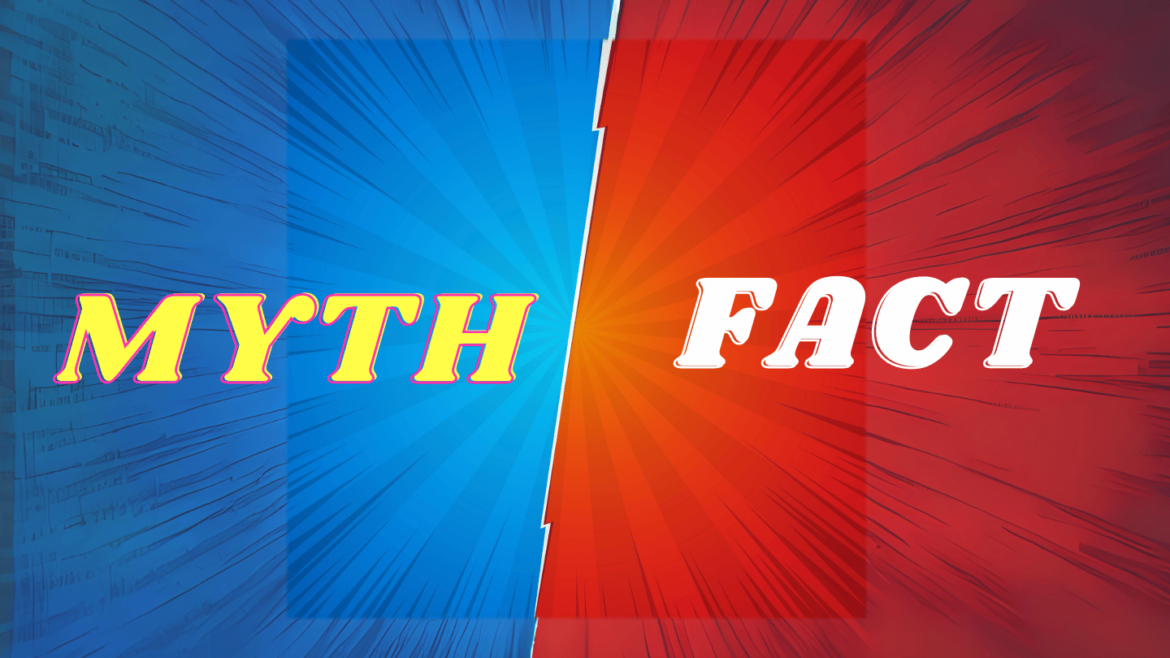In a world where information flows incessantly, distinguishing between fact and fiction becomes an essential skill. From age-old adages passed down through generations to contemporary notions fueled by the internet, the realm of myths and facts is rich and diverse. In this exploration, we delve into 20 widely known beliefs, uncovering the truth behind each to demystify the misconceptions that have permeated popular culture.
Human curiosity often leads us to accept intriguing notions without scrutinizing their validity. The allure of a good story or the comfort of conventional wisdom can sometimes cloud our judgment, perpetuating myths that persist over time. Conversely, certain facts, though grounded in truth, may be overlooked or overshadowed by more sensational narratives.
20 Shocking Myths People Actually Still Believe
The following compilation seeks to unravel some of the most pervasive myths and validate certain intriguing facts. As we embark on this journey through commonly held beliefs, our aim is not only to correct misconceptions but also to foster a deeper appreciation for the scientific principles and historical context that underpin our understanding of the world. So, let’s embark on this intellectual adventure, challenging preconceived notions and embracing a more accurate perception of reality.
People only use 10% of their brains.
Myth or Fact: Myth
Explanation: Brain imaging studies reveal that much more than 10% of the brain is actively used, dispelling the long-standing myth that humans underutilize their brains.
Eating carrots improves your eyesight.
Myth or Fact: Partial Fact
Explanation: Carrots are beneficial for eye health due to their vitamin A content, but they won’t cure existing vision problems.
Honey never spoils.
Myth or Fact: Fact
Explanation: Archaeological findings confirm that honey, if stored properly, can remain edible for thousands of years, showcasing its remarkable shelf life.
Bulls hate the color red.
Myth or Fact: Myth
Explanation: Bulls are colorblind, and their reaction during a bullfight is driven by the movement of the matador’s cape rather than the color red.
The Eiffel Tower can be 15 cm taller during the summer.
Myth or Fact: Fact
Explanation: The metal structure of the Eiffel Tower expands in the summer heat, causing a slight increase in height.
Sugar makes children hyperactive.
Myth or Fact: Myth
Explanation: While sugary treats can provide a burst of energy, research has not established a direct link between sugar consumption and hyperactivity in children.
Goldfish only have a 3-second memory.
Myth or Fact: Myth
Explanation: Goldfish possess surprising cognitive abilities, remembering things for months and challenging the misconception of their short-term memory.
Diamonds are formed from compressed coal.
Myth or Fact: Myth
Explanation: Diamonds require extreme temperatures and pressure, conditions not met by the formation of coal. They originate deep within the Earth’s mantle.
The universe is constantly expanding.
Myth or Fact: Fact
Explanation: Edwin Hubble’s discovery in the 1920s confirmed that the universe is indeed expanding, and this expansion is accelerating.
You can catch a cold if you get wet in the rain.
Myth or Fact: Myth
Explanation: Colds are caused by viruses, not by being wet or cold.
A duck’s quack doesn’t echo.
Myth or Fact: Myth
Explanation: Contrary to the myth, a duck’s quack can echo like any other sound.
If you touch a baby bird, the scent will cause the mother to reject it.
Myth or Fact: Myth
Explanation: Birds have a limited sense of smell, and human scent is unlikely to lead to the rejection of a baby bird by its mother.
Bats are blind.
Myth or Fact: Myth
Explanation: While some bats have poor eyesight, many can see well. Echolocation is their primary method for navigation and finding prey.
Albert Einstein failed math in school.
Myth or Fact: Myth
Explanation: Einstein excelled in mathematics, and the notion that he failed likely stems from a misunderstanding of his educational history.
Chameleons change color to blend in with their surroundings.
Myth or Fact: Myth
Explanation: Chameleons change color based on temperature, light, and mood, not specifically to camouflage with their surroundings.
Chewing gum takes seven years to pass through the digestive system if swallowed.
Myth or Fact: Myth
Explanation: Gum passes through the digestive system at a rate similar to other foods and is not harmful if swallowed.
Lightning never strikes the same place twice.
Myth or Fact: Myth
Explanation: Lightning can and does strike the same place multiple times, especially tall structures like buildings and towers.
The Great Wall of China is visible from space.
Myth or Fact: Myth
Explanation: Despite its length, the Great Wall’s narrow construction and materials make it challenging to see from space with the naked eye.
Shaving makes hair grow back thicker and darker.
Myth or Fact: Myth
Explanation: Shaving has no impact on the thickness or color of hair; it’s a common misconception.
The world’s hottest pepper is so hot, it can melt steel.
Myth or Fact: Myth
Explanation: While the Carolina Reaper pepper is exceptionally spicy, it won’t actually melt steel, though it’s advised not to underestimate its heat.
Separating fact from fiction is crucial in fostering a more accurate understanding of the world around us. So, the next time you encounter one of these myths or facts, you’ll be armed with the knowledge to discern the truth.
Related Posts
Hi there! I’m Sethu, your go-to guy for all things tech, travel, internet, movies, and business tips. I love sharing insights and stories that make life more interesting. Let’s explore the world together, one article at a time!










